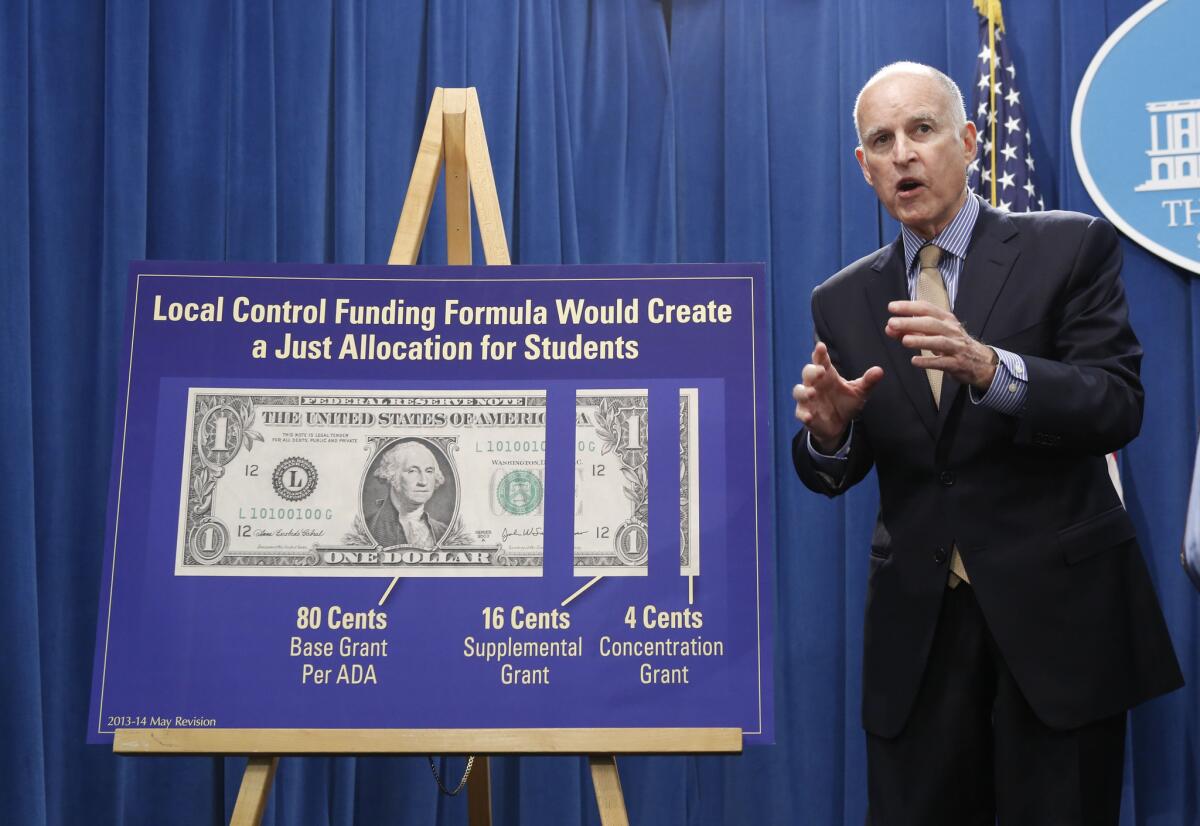A return to the ‘era of limits’ in California

- Share via
In a reminder of the boom years of the late 1990s, California’s fiscal picture brightened in the first few months of 2013, leaving the state unexpectedly flush with cash. But when Gov. Jerry Brown unveiled his revised budget proposal Tuesday for fiscal 2013-14, he did something much more reminiscent of the “era of limits” in the 1970s: He laid out a cautious and moderate course. Specifically, he called on the Legislature to increase spending by less than 1% while doubling the amount held in reserve.
His comments echo those made by other top Democrats. Assembly Speaker John John A. Pérez (D-Los Angeles) has called for the state to put excess capital gains receipts into a rainy-day fund rather than spending it, a prudent step to smooth the ups and downs of volatile state revenue. And Senate President Pro Tem Darrell Steinberg (D-Sacramento) has proposed that the state dedicate two-thirds of any surplus revenue to building reserves and paying down debt, although he wanted to spend more than Brown proposed.
Brown’s restraint may disappoint those who hoped that the tax increases approved by voters last November would allow the state to roll back the clock to pre-recessionary times and restore the billions of dollars cut from important social programs. We too would like to repair the state’s tattered safety net, undo damaging cuts to the courts and reverse other belt-tightening steps that will only hurt Californians in the long run. But now is not the time.
INTERACTIVE: 2013-14 California budget proposal
Although personal income tax revenue has risen much more sharply that previously expected, the increase stemmed mainly from a spike in capital gains tax revenue, not from durable growth in the economy. In fact, Brown predicted that slower-than-expected growth will leave Sacramento with less revenue in the coming fiscal year than it has in the current year. As a result, aside from restoring billions of dollars slashed from schools, the state can do little more than preserve the status quo.
Lawmakers and Brown still have many details to work out about the budget and the spending priorities it sets, starting with Brown’s controversial proposed changes to school funding formulas. Other hot buttons include his proposals to cut aid to counties for providing medical care to the uninsured and to borrow cap-and-trade receipts that were supposed to be spent combating greenhouse gas emissions. But at least Brown and top Democrats have the big picture right.
More to Read
A cure for the common opinion
Get thought-provoking perspectives with our weekly newsletter.
You may occasionally receive promotional content from the Los Angeles Times.






